#Bruce Seton
Text

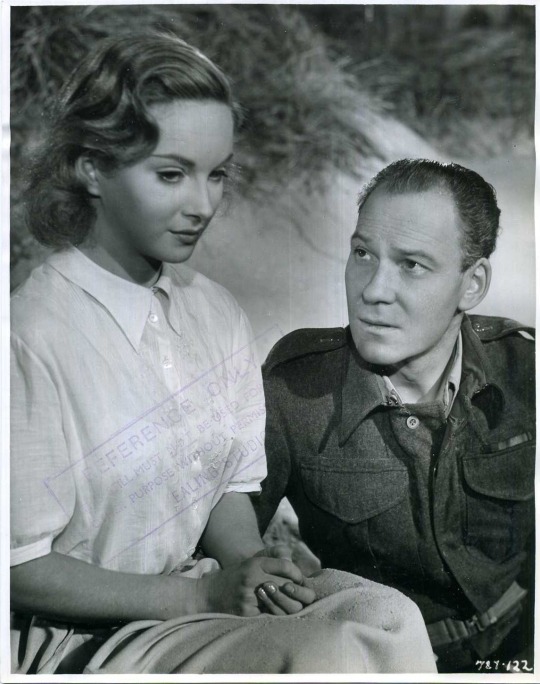


Whisky Galore! (Tight Little Island) (1949) Alexander Mackendrick
September 3rd 2023
#whisky galore!#tight little island#1949#alexander mackendrick#basil radford#bruce seton#gordon jackson#joan greenwood#jean cadell#wylie watson#james robertson justice#john gregson#gabrielle blunt#catherine lacey#morland graham#james anderson#duncan macrae#henry mollison#finlay currie#whisky galore#ealing
7 notes
·
View notes
Text
youtube
Gorgo, de 1961, o "parente britânico" esquecido de Godzilla e King Kong!
#gorgo#gorgo movie#monsters#kajuns#british godzilla#godzilla#Eugène Lourié#Eugene Lourie#Bill Travers#William Sylvester#Vincent Winter#Joseph O'Conor#king kong#Bruce Seton#Martin Benson#Barry Keegan#Maurice Kaufmann#Howard Lang#Basil Dignam#Christopher Rhodes#Dervis Ward#monsterverse#Youtube
1 note
·
View note
Text
Relationships:
Tim Drake & Dick Grayson Tim Drake & Talia al Ghul Tim Drake & Damian Wayne Tim Drake & Jason Todd Tim Drake & Bruce Wayne Stephanie Brown/Tim Drake Tim Drake & Barbara Gordon
Characters:
Tim Drake Ra's al Ghul Talia al Ghul Damian Wayne Dick Grayson Bruce Wayne Jason Todd Stephanie Brown Barbara Gordon Cassandra Cain duke Thomas league of Assassins Members (DCU)
Additional Tags:
One-Sided Tim Drake/Ra's al Ghul Creepy Ra's al Ghul evil Ra's al Ghul Tim Drake is Not Okay chess chess Metaphors implied/Referenced Rape/Non-conNot Canon Compliant protective Batfamily (DCU) Good Parent Talia al Ghul minor Talia al Ghul/Bruce Wayne protective Dick Grayson manipulative Ra's al Ghul protective Tim Drake canon-Typical Violence whipping self-Hatred hood Sibling Jason Todd protective Jason Todd hurt/Comfort Sad with a Happy Ending everyone Needs A Hug threats of Rape/Non-Con dissociation Jason Todd Sings flashbacks panic Attacks good Sibling Dick Grayson BAMF Tim Drake hurt Tim Drake hurt Dick Grayson Ra's Al Ghul's bedazzled chess setone person will understand Lazarus Pit Side Effects (DCU) Jason Todd's Eyes Glow
Summary:
zugzwang: in chess, the obligation to move, when any move at all will be bad
"A game of chess, Detective. I assume you know how to play. You win, and you and your family may leave freely. I win, and you take your place as my heir and I dispose of the others as I see fit."
Tim stopped breathing.
Ra's spread his hands, still smiling that condescending crocodile grin. "Our skills are evenly matched. The challenge is more than fair."
All a game, just win. All a game, just win. Just win, just win, win, win...
Keep your head.
#tim drake#ras al ghul#talia al ghul#dick grayson#bruce wayne#jason todd#damian wayne#cassandra cain#stephanie brown#barbra gordon#duke thomas#zugzwang
24 notes
·
View notes
Text

On October 26th 1327 Elizabeth de Burgh, Queen Consort of Robert the Bruce died at Cullen Castle, Banffshire.
Note sources disagree and some say October 27th.
In 1302 Elizabeth de Burgh married Robert Bruce, Earl of Carrick, at Writtle, near Chelmsford in Essex. Bruce was a widower with a young daughter. He had first married Isabella of Mar who died, in 1296, a short time after giving birth to a daughter, Marjory Bruce. Elizabeth's father was one of the most powerful Irish nobles of the period, Richard Óg de Burgh, 2nd Earl of Ulster.
When The Bruce first stood up to English rule he was beset by defeat and he sent Elisabeth, Marjory, his sisters Christina and Mary Bruce, and Countess Isobel to Kildrummy Castle in the north, where his brother Neil was to protect them. Unfortunately the castle was laid to siege, the Royal women escaped but were captured not long after at the sanctuary of St Duthac at Tain in Easter Ross where William II, Earl of Ross violate the sanctity, later handing them over to the English. He seems to have been forgiven by The Bruce for this as his name appears on The Declaration of Arbroath in 1320, perhaps showing a merciful nature to King Robert.
Isobel was held captive in an iron cage at Berwick Castle. Robert’s younger sister, Mary Bruce, was locked into an iron cage at Roxburgh Castle. She was just 24 years old. Mary spent the next four years caged and humiliated. Her older sister Christian Bruce was shown more compassion and was imprisoned in a Gilbertine nunnery in Lincolnshire. Christian’s husband, Sir Christopher Seton, was hanged, drawn and beheaded at Dumfries.
Elizabeth was held prisoner in England. It is thought that she was better treated because her father Richard de Burgh, Earl of Ulster, was a close friend of King Edward I. Elizabeth spent the next eight years in captivity in Burstwick, Bisham Manor, Windsor Castle, Shaftesbury Abbey, Barking Abbey and Rochester Castle.
Marjory Bruce, Robert’s daughter, was only 12 years old when she was captured at Tain. At first King Edward decided that she would be locked into an iron cage and hung for all to see from the walls of the Tower of London. Edward relented and Marjory was held in a Gilbertine nunnery in Yorkshire.
After the Battle of Bannockburn the Bruce was able to trade English nobles for his family. Mary Bruce went on to be twice married and had a son, Iain. Christian Bruce married Sir Andrew Murray who later became guardian of Scotland. Christian later led the defence of the besieged Kildrummy Castle at 62 years old and lived to 84.
Elizabeth de Burgh and Robert the Bruce were reunited and went on to have four children - Matilda, Margaret, John and David, who would become David II, King of Scots. Elizabeth died on this day 1327 and was buried in Dunfermline Abbey.
17 notes
·
View notes
Text
Fyvie Castle
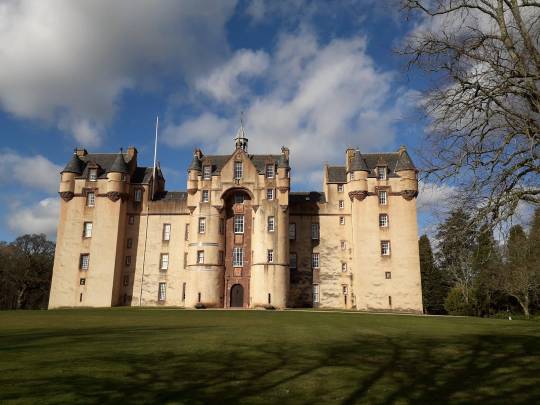
The earliest parts of Fyvie Castle date from the 13th century – some sources claim it was built in 1211 by William the Lion. Fyvie was the site of an open-air court held by Robert the Bruce, and Charles I lived there as a child. Following the Battle of Otterburn in 1390, it ceased to be a royal stronghold. Instead, it fell into the possession of five successive families – Preston, Meldrum, Seton, Gordon and Leith – each of whom added a new tower to the castle. The oldest of these, the Preston Tower (located on the far right as one faces the main facade of Fyvie), dates to between 1390 and 1433. The impressive Seton tower forms the entrance, and was erected in 1599 by Alexander Seton. He commissioned the great processional staircase several years later. The Gordon Tower followed in 1778 , and the Leith in 1890.
13 notes
·
View notes
Text
The Demon Barber of Fleet Street (1936)
Keep an eye out for my opinion on
- Junji Ito's Tale of the Macabre
- Guillermo Del Toro's Cabinet of Curiosities
- Netflix's Love Death and Robots
‘Lovely lot of throats, the lot of them. Beautiful throats! Rich and mellow to the razor.’
Directed/ produced by George King
Screenplay by Frederick Hayward, H. F. Maltby
Cast: Tod Slaughter, Stella Rho, John Singer, Eve Lister, Bruce Seton
Released: March 1936
Please remember this film was made in 1936.
Based on the 1847 play by George Dibdin Pitt, this film is not anything like the Tim…

View On WordPress
2 notes
·
View notes
Text
GORGO (1961) – Episode 157 – Decades Of Horror: The Classic Era
“I came to let him go back to the sea where he belongs. Maybe to save your silly skins for you!” Yes, young sir. Save their silly skins, please, sir? Join this episode’s Grue-Crew – Chad Hunt, Daphne Monary-Ernsdorff, Doc Rotten, and Jeff Mohr – as they travel across the pond (rather than across the Pacific) for some sweet kaiju-in-the-UK with Gorgo (1961).
Decades of Horror: The Classic Era
Episode 157 – Gorgo (1961)
Join the Crew on the Gruesome Magazine YouTube channel!
Subscribe today! And click the alert to get notified of new content!
https://youtube.com/gruesomemagazine
ANNOUNCEMENT
Decades of Horror The Classic Era is partnering with THE CLASSIC SCI-FI MOVIE CHANNEL, THE CLASSIC HORROR MOVIE CHANNEL, and WICKED HORROR TV CHANNEL
Which all now include video episodes of The Classic Era!
Available on Roku, AppleTV, Amazon FireTV, AndroidTV, Online Website.
Across All OTT platforms, as well as mobile, tablet, and desktop.
https://classicscifichannel.com/; https://classichorrorchannel.com/; https://wickedhorrortv.com/
Greedy sailors capture a giant lizard off the coast of Ireland and sell it to a London circus. Then its mother shows up.
Director: Eugène Lourié
Writers: Robert L. Richards (credited as John Loring), Daniel James (credited as Daniel Hyatt)
Selected Cast:
Bill Travers as Joe Ryan
William Sylvester as Sam Slade
Vincent Winter as Sean
Christopher Rhodes as McCartin
Joseph O’Conor as Prof. Hendricks
Bruce Seton as Prof. Flaherty
Martin Benson as Dorkin
Maurice Kaufmann as Radio Reporter (as Maurice Kauffman)
Basil Dignam as Admiral
Barry Keegan as Mate
Tommy Duggan as 1st Naval Officer (as Thomas Duggan)
Howard Lang as 1st Colonel
Dervis Ward as Bosun
Mick Dillon as Gorgo (uncredited)
Dave Wilding as Gorgo (uncredited)
Bob Bura as Gorgo (uncredited)
John Wood as Sandwich-Board Man (uncredited)
Gorgo features Doc’s favorite non-Japanese sea monster and you have to love the film’s, “No, the monster is not the main monster,” twist. How many times have you seen that trope in films? The Grue Crew can’t think of an example prior to Gorgo, but, perhaps, some of the Grue Believers know better. At any rate, it’s another Classic Era episode where nary an evisceration is seen. There is, however, much squashing and squishing.
At the time of this writing, Gorgo is available for streaming from Tubi, Pluto TV, and others, along with a variety of PPV options. The film is also available as a Blu-ray disc from VCI Video. A 4K Ultra HD version is due for release on August 29, 2023, from Vinegar Syndrome.
Gruesome Magazine’s Decades of Horror: The Classic Era records a new episode every two weeks. Up next in their very flexible schedule, as chosen by Chad, is Universal’s House of Dracula (1945). Calling all Universal Horror monsters! Well, maybe not all.
Please let them know how they’re doing! They want to hear from you – the coolest, grooviest fans: leave them a message or leave a comment on the Gruesome Magazine YouTube channel, the site, or email the Decades of Horror: The Classic Era podcast hosts at [email protected]
To each of you from each of them, “Thank you so much for watching and listening!”
Check out this episode!
0 notes
Photo

Whisky Galore! (Alexander Mackendrick, 1949)
Cast: Basil Radford, Catherine Lacey, Bruce Seton, Joan Greenwood, Wylie Watson, Gordon Jackson, Gabrielle Blunt, Jean Cadell, James Robertson Justice. Screenplay: Compton MacKenzie, Angus MacPhail, based on a novel by MacKenzie. Cinematography: Gerald Gibbs. Art direction: Jim Morahan. Film editing: Joseph Sterling, Charles Crichton. Music: Ernest Irving.
Alexander Mackendrick was unhappy with his first feature as a director, saying that it looked like "a home movie." But Whisky Galore! was a huge and enduring success, perhaps thanks in large part to its editors, Joseph Sterling and the uncredited Charles Crichton, who reassembled its footage and even had some additional takes shot, after initial dissatisfaction from Ealing Studios. In fact, the film helped launch Ealing as one of the major forces in what has come to be known as a kind of golden age of British film comedy, and Mackendrick went on to make two more hit comedies, The Man in the White Suit (1951) and The Ladykillers (1955), in that era. Whisky Galore! is the story of the residents of an island in the Outer Hebrides who face calamity when wartime shipping blockades deprive them of a vital necessity, the water of life itself, whisky. And then a cargo ship carrying cases of the stuff hits the rocks nearby, is abandoned by its crew, and shunned by salvage authorities. Only the determined Capt. Waggett of the Home Guard stands between the townsfolk and the shipwreck. Waggett, played by Basil Radford, is a stern by-the-books man, despite the fact that no one, including his wife, takes him seriously. There's a subplot involving two sisters, played by Joan Greenwood and Gabrielle Blunt, and their suitors, played respectively by Bruce Seton and Gordon Jackson, but most of the film is about the clash between what authority Capt. Waggett can muster and the efforts of the people to get at the whisky.
0 notes
Text
Shakur Stevenson Formally Announces Robson Conceição Homecoming Title Defense at Newark Press Conference
(adsbygoogle = window.adsbygoogle || []).push({});
Follow @Frontproofmedia!function(d,s,id){var js,fjs=d.getElementsByTagName(s)[0],p=/^http:/.test(d.location)?'http':'https';if(!d.getElementById(id))(document, 'script', 'twitter-wjs');
Published: July 26, 2022
NEWARK, N.J. — Newark native Shakur Stevenson always wanted to return home as a world champion. The WBC/WBO junior lightweight king will get that opportunity Friday, Sept. 23 against Robson Conceição at Prudential Center, home of the NHL’s New Jersey Devils.
The homecoming festivities kicked off Monday with a press conference at Prudential Center, and Stevenson was treated to a local hero’s welcome. Special guests included Seton Hall Men’s Basketball Coach Shaheen Holloway, Devils defenseman Dougie Hamilton, and Ras Baraka, Mayor of Newark.
Promoted by Top Rank, tickets starting at $50 are on sale now and can be purchased at Ticketmaster.com. Stevenson-Conceição and the return of lightweight U.S. Olympic silver medalist Keyshawn Davis will be broadcast on ESPN, ESPN Deportes and ESPN+ at 10 p.m. ET/7 p.m. PT. Undercard action will stream on ESPN+ and includes welterweight Jahi Tucker, featherweight Bruce “Shu Shu” Carrington, and junior bantamweight Floyd “Cashflow” Diaz.
Here is what the fighters had to say at the press conference.
Carl Moretti, VP of Boxing Operations, Top Rank
“Shakur Stevenson last fought here in July 2019. He now returns as a two-time world champion and a unified 130-pound champion. He’s on everyone’s pound-for-pound list. He’s one of the best fighters in the world. And when all of us travel, and you run into somebody and ask, ‘Where are you from?’ And you say, ‘Jersey.’ They’ll say, ‘What exit?’ But you know what, we say that it’s going to change to, ‘That’s the hometown of Shakur Stevenson.’ That’s how far he’s going to go. And he’s not even close to his prime.”
Shakur Stevenson
“For all the kids, you’ve got to keep trying to be great. Keep striving to be better. I want to be an example for you all. I want to make sure that I do my part. I’m going to come in shape and ready to fight on September 23. I’m going to put on a show for the kids, and for the city of Newark. I want to give you all a hell of a performance. I’m going to do my part, and I’m going to come in shape. I appreciate the support. I’m locked in, and September 23, I’m going to put on a show.”
Keyshawn Davis
“I feel like Top Rank has the best prospects in the game. This is definitely one of the cards to watch. I feel like this is going to be another ‘Oscar Valdez’ type of a night. I feel like this is going to be another Shakur Stevenson vs. Jamel Herring fight. I feel like fight is going to be about six rounds right here. But not only the main event. I feel like the undercard is going to put on a spectacular performance, too. I don’t really see any of us going the entire rounds because I feel like we should be getting stoppage that night. As for me, the business man is going to do what he do. I’ve been putting on great performances ever since ya’ll been seeing me fight."
Bruce Carrington
“I know you will all be in the building on September 23. You know I’m bringing my people on September 23. We’re going to put on a show. A big shout out to all the boxers here. Floyd ‘Cashflow’ Diaz is in the building. ‘Flashy’ Keyshawn Davis is in the building. We’ve got Jahi Tucker. He’s in the building. And then you’ve got the man himself, Shakur Stevenson from Newark, New Jersey. He’s going to put on a show. And you know me as well, I’m going to put on a show, too. I’ll see you on September 23.”
Jahi Tucker
“On September 23, I’ll have a good performance for you all. It’s my first time fighting in Jersey. I’m going to make it a memorable one. Shakur is a great fighter. This is his hometown, so I’ve got to come strong. I’m going to be here September 23, and I’ll see you all."
Floyd Diaz
“I just want to make sure I put on a show for everybody. I want to show everybody that I’m scary at 122. And it is what it is. On September 23, me and my guys are going to put on a show. We’re here to take over.”
(Featured Photo: Mikey Williams/Top Rank via Getty Images)
0 notes
Photo
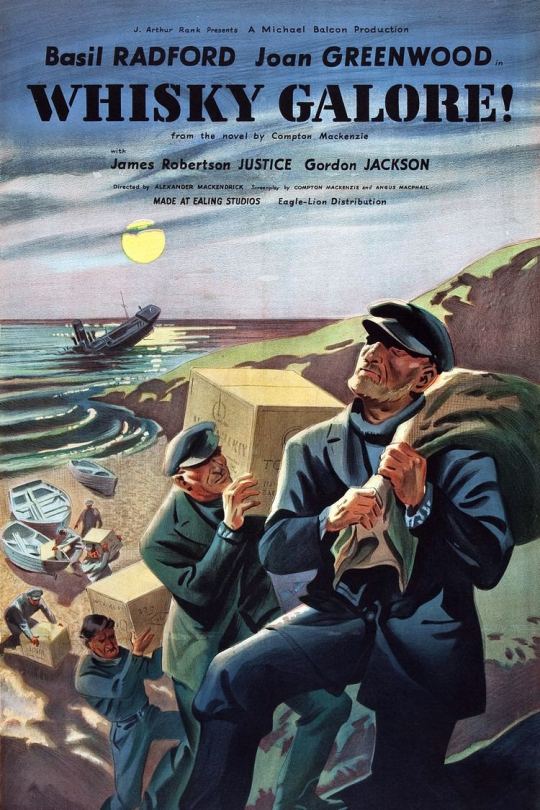
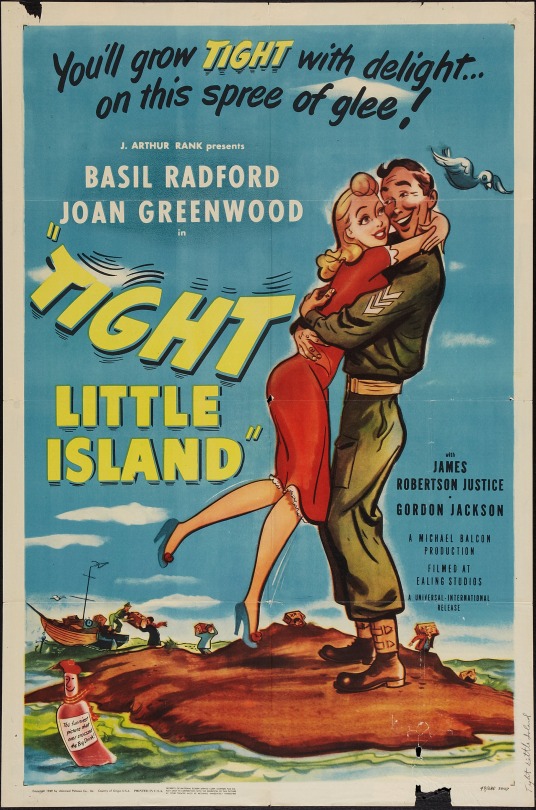
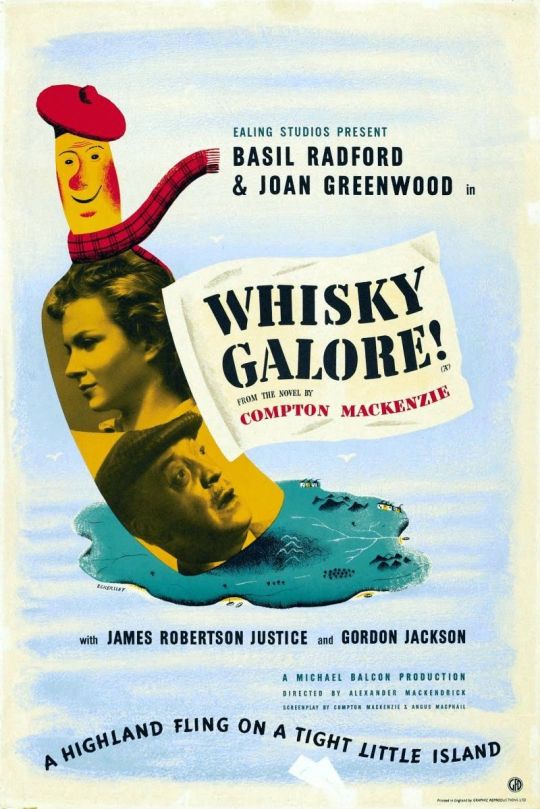
Whisky Galore! (Tight Little Island) (1949) Alexander Mackendrick
April 11th 2020
#whisky galore!#tight little island#1949#alexander mackendrick#basil radford#catherine lacey#bruce seton#joan greenwood#wylie watson#gabrielle blunt#gordon jackson#jean cadell#james robertson justice#morland graham#john gregson#james anderson#duncan macrae#henry mollison#ealing
10 notes
·
View notes
Photo

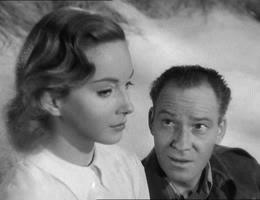
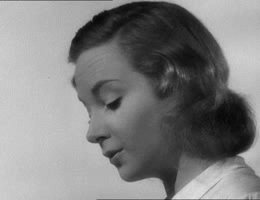
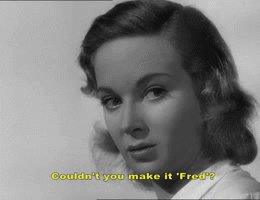

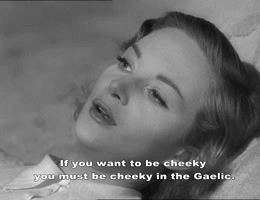

Bruce Seton and Joan Greenwood as Sgt. Odd and Peggy Macroon in “Whisky Galore!” (1949).
9 notes
·
View notes
Text
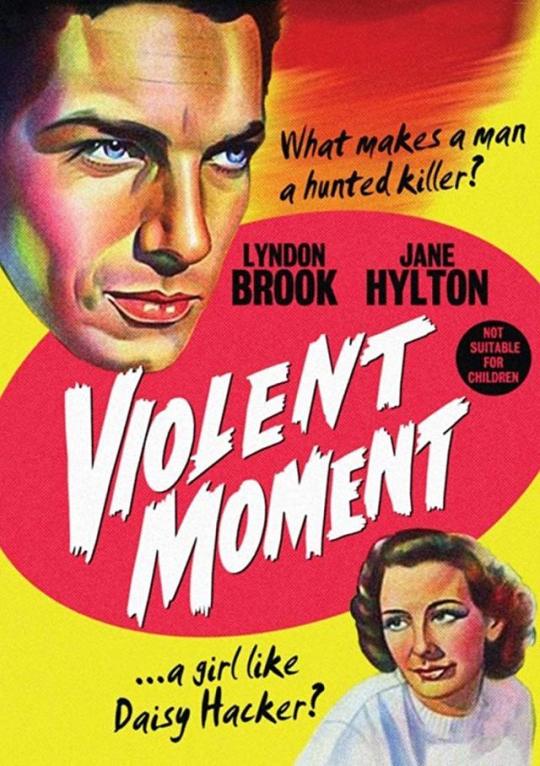




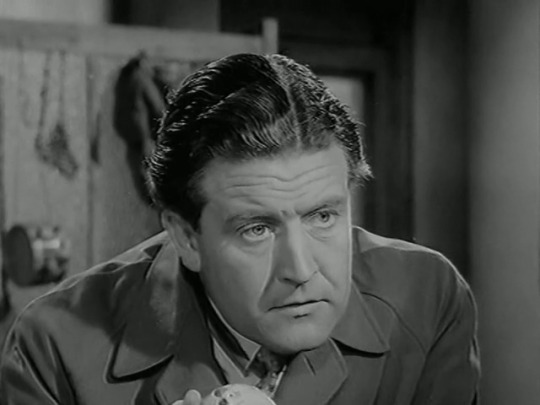
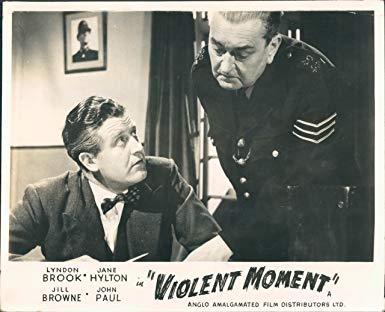
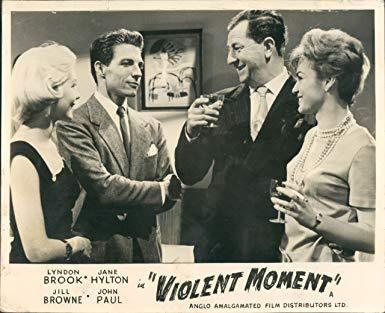
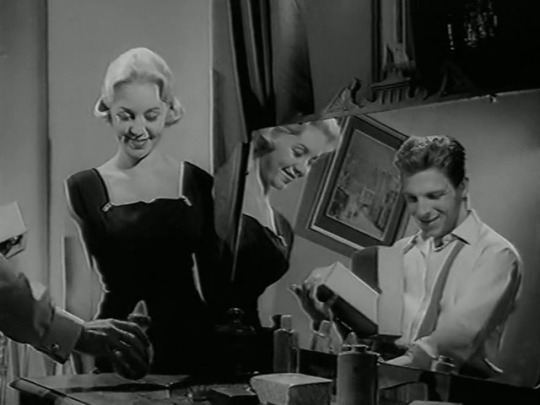
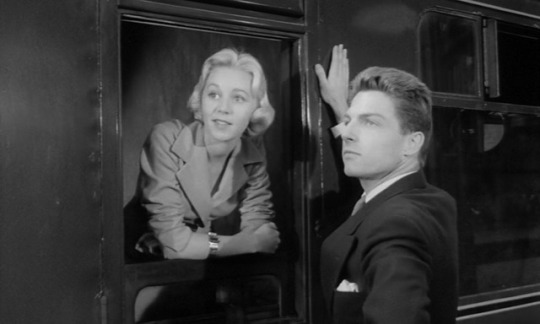
Violent Moment (Rebound, 1959)
"I hadn't heard a peep out of them all day; quiet as the grave it was down here, and that was suspicious because usually they were shouting, or making some sort of din. Why, only the day before yesterday I had to complain, thought he was killing her... My God, he probably was."
#violent moment#rebound#choking tw#strangling#1959#films i done watched#british cinema#crime film#sidney hayers#lyndon brook#jill browne#john paul#jane hylton#rupert davies#moira redmond#bruce seton#martin miller#john boxer#frederick piper#hayers' directorial debut is a strange and emotionally complex one. lovely lyndon brook is a deserter in the months after ww2 who comes hom#to find his gf has sold their baby and kills her in a blind rage. we follow him five years later having built up a life as a businessman#with a new fiancé but haunted by the loss of his son. what's unusual in just how sympathetic hayers makes brook's character. even detective#john paul feels sorry for him by the end yet this is a man who has committed a brutal crime. its.. complicated. shades of les mis in the#first half (or am i reading too deep) and some great performances from the leads. hylton takes second billing despite only really appearing#in one scene while rupert davies is surprisingly far down the cast list (but then this was just before maigret). hayers shows some style#and originality with what is essentially a cheap b movie. the killing scene is particularly well done intercut with a laughing childs toy t#make the whole thing really unsettling. also surprisingly non judgemental about desertion and unwed parents.#an unusual thoughtful strange little film.#oh but check out that horrible poster art. ok i guess thats recognisable as brook but is that meant to be hylton underneath??
0 notes
Text
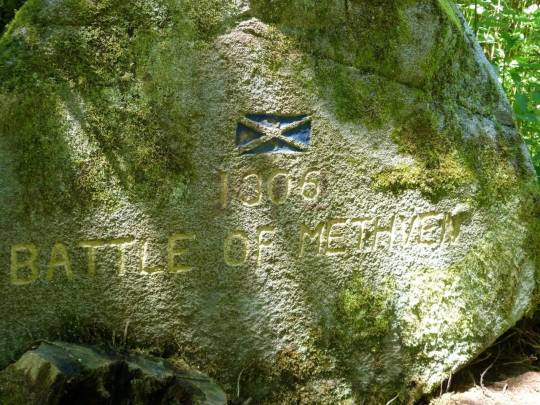
On June 19th 1306 the army of Robert the Bruce suffers a defeat at the hands of the English at the Battle of Methven, west of Perth.
Word had reached King Edward I in London, that the Bruce had murdered John Common, this must have angered him, but the English King was ill at the time so he dispatched his cousin Aymer de Valence North with instructions to “burn, slay and raise dragon”. Valence, who was also brother-in-law of the murdered John Comyn, headed north leading the vanguard of an English army. Valence had punched into Scotland and by early June had seized Perth. His numbers were swelled by supporters of the murdered Comyn. Edward was left in London and began assembling an invasion force to follow Valance when he was well enough to lead it.
The capture of Perth left Bruce with a dilemma. On the one hand he needed to take action to show he was an effective commander and it made sense to deal with the English vanguard before the entire might of the army arrived under Edward I. However, Bruce only had limited forces with which to deal with a well equipped English host. On balance he decided to fight and marched to Perth arriving outside the walls of the town on 18 June 1306.
Valence, was an experienced soldier who had fought with Edward I in his continental campaigns and in Scotland. The size of the army at his disposal is disputed with the various sources contradicting each other as to whether it was larger or smaller than the Scottish force. The configuration of the English army is also unknown although it seems likely it consisted on a significant number of mounted troops.
The Scottish forces were under the direct command of Robert the Bruce and are generally numbered around 4,500 strong although this figure is probably over-inflated. Bruce’s deputy at Methven was Christopher Seton with other notable commanders including Gilbert Hay and James Douglas.
Late afternoon on 18 June 1306 Bruce’s force approached Perth. Envoys were sent forward to request the English march out of the town and fight a pitched battle. Valence refused to accept the challenge on the grounds it was too late in the day for a battle to be begin. The relative size of the two forces may also have been a factor in his decision. Either way Bruce believed that no battle would be fought that day and withdrew his forces five miles west towards Methven. That site was chosen due the proximity of a small brook and a woodland enabling the Scots to forage for supplies. They then settled down for the night pitching their billets across the area. There seems to have been little thought given to deploying sentries or sending scouts forward to keep an eye on the English.
Valence had no intention of agreeing to an orderly pitched battle. As far as he was concerned, he was not only dealing with rebels but ones that had murdered a relative on holy ground. Before dawn on the 19 June 1306, he led his men out of Perth and proceeded west along the road to Crieff. Little is known about the sequence of the battle but, whenever the Scots became aware of the English advance, it was too late. The English assault would have been spearheaded by the heavily armoured, mounted Knights that stormed into the unprepared Scottish camp. With no time to muster a defensive formation, the dispersed Scottish infantry had no chance and were cut to pieces.
The Scottish forces fled the battlefield but were cut down and casualties may have numbered in the thousands. Some form of rearguard action must have been fought because Bruce and his key supporters, along with 500 troops, managed to disengage and retreat west towards Crieff.
Bruce fled the battlefield but at Dalrigh was ambushed by one thousand members of the MacDougall and MacNab clans led by John MacDougall of Lorne, kinsmen of the murdered Sir John Comyn. I shall post about Dalrigh in August.
A simple stone marks the site of the Battle of Methven.
13 notes
·
View notes
Text
In other news I still have very strong feelings about Christian Bruce’s whole story. Because she may well have been at Kildrummy when it fell in 1306 (alternatively she might have fled north to Ross with the queen and the rest of the ladies shortly before, but at least one source indicates she was still in the castle even after they left). Her brother Neil, who had been in charge of the Kildrummy garrison, was hanged, drawn, and quartered in Carlisle and then, after their capture, Christian and the other women were shipped off to captivity in England for several years, while the earl of Atholl, who had accompanied the queen to Tain, was also executed. Christian was placed in a nunnery and the queen was put under house arrest, but Mary Bruce and Isabella of Fife were famously imprisoned in “cages” and Marjorie Bruce was initially going to be held in a similar device in the Tower of London before she was sent to a nunnery in Lincolnshire instead.
But as horrid as that story is it’s not really the main point of this post. Instead let’s jump forward nearly thirty years to 1335, when all of Christian’s brothers (and indeed Marjorie, and Queen Elizabeth, and probably Mary and Isabella too) were dead and gone, and war had broken out again and her nephew the young David II had had to be sent away to France for his safety while others fought in his name. Only a few castles remained in the Scots’ hands and one of those castles was Kildrummy. When the earl of Atholl (the executed one’s grandson) was laying siege to the castle on behalf of Edward Balliol (supported by Edward III of England), it was Christian, now probably in her fifties at least, who was in charge of Kildrummy’s defence.
And this time she held the castle. At least, she managed to hold out in Kildrummy long enough until the garrison were relieved by the forces of her husband, Andrew Murray (Guardian of Scotland and the posthumous son of William Wallace’s co-commander at Stirling Bridge) after his victory at the Battle of Culblean on St Andrew’s Day, 1335. And for all that these people were imperfect (and many of them downright nasty pieces of work) and in a complex situation, and for all that we could argue about whether the Bruces were in the right or not, it’s a bit difficult not to be relieved and happy for her.
I just think about that a lot.
#Robert can go suck eggs; I'm here for his sisters really#I mean his story is compelling but let's be realistic the man is a Difficult Figure#Christian on the other hand I do not feel very guilty about being fascinated by#This whole story though- the parallels and the symbols and what Kildrummy meant in that family's whole history#Just... chills guys chills#I wonder at her emotional state in 1335 defending that castle again#As for whether she was in Kildrummy or Tain when she was captured in 1306 I will need to doublecheck this#I remember at least one source saying 'the wife of Christopher Seton' was found in Kildrummy when it fell#But it's been a while since I looked into it#Hence why I hedged my bets above#But anyway#Christian Bruce deserved her tomb in the royal abbey of Dunfermline#And I rarely say this about complex historical figures but#We stan#Also like Andrew Murray was probs about eight or nine in 1306 asdhjkflf#A very long conflict
5 notes
·
View notes
Text
History Bites: Coolest Battles Part 1
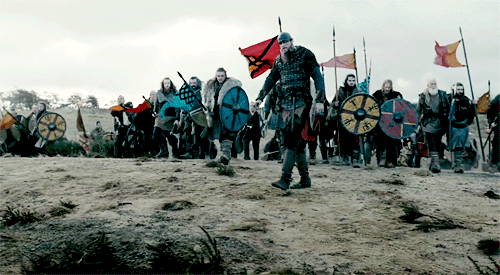
In History Bites, I pick the best moments of history and the antics historical figures in order to give you inspiration for your WIP. Think of History Bites like prompts, only juicer and 90% accurate (results may vary).
So in this History Bites we explore battles which could act as great inspiration for your WIPs. All of these battles are steeped in drama and blood. Let your battles commence.
The Battle of Carrhae 53BC was brought forward by many driving factors no more so than the Roman Statesman Crassus. Crassus was part of the Triumvirate and the richest man in the world. Crassus felt rather at a loss compared to his allies Pompey and Caesar who were military geniuses and his famous victory over Spartacus had been years prior. Eager to show his power, he funded and led the invasion of Parthia, Rome's largest enemy in the east. Crassus entered Parthia unchallenged, increasing his confidence as he march forward. The Parthians were not far behind, appearing before the Romans with such speed that the Romans were taken unawares. Crassus's generals recommended they get into the usual formation (infantry at the centre with cavalry on the wings) but Crassus decided to have the men form a hollow square, twelve cohorts by twelve cohorts which would protect them from being out flanked. The Roman forces march forward to get better ground by a nearby stream, where the generals advised Crassus to wait until morning to attack but Crassus's son, Publius advised they attack then and there. The Parthians played mind games with the Romans, pounding drums to unnerve them and marched with their armour covered with cloth to lull the Romans into confidence... Before revealing the steel to Romans (perhaps the first wig reveal?). The Parthians sent their mounted archers to surround the Romans, which Crassus's calvary tried to defend against but failed to do. The Parthians smashed into the legionnaires firing at them. The Romans were lucky with their large square shields and top of the range armour but the arrows still found their marks though many wounds were non fatal. The Romans quickly tried to advance to combat the range of the archers in their famous turtle formation (shields surrounding them) but they were slowed by this and the Parthians charged, tearing them to pieces. The Romans panicked and broke leading to numerous casualties. Hoping to survive until the Parthians ran out of arrows, Crassus sent his son Publius to attack the Parthian mounted archers to give the legions more breathing space. But the Parthians faced him off and separated him from his father's army, slaughtering his men. Publius did the Roman thing and killed himself rather than be taken prisoner. Crassus did not know this and ordered an advance to save his son but on his arrival he was greeted with the head if Publius set on a spear. Filled with grief, Crassys ordered a retreat. The Romans stumbled into the minor village of Carrhae to rest but the Parthians were not far behind. The Romans left their 4000 wounded behind, leaving them to be slaughtered by the Parthians. In the darkness, cohorts began to go missing as the Parthians harried the Roman army as they retreated. In the morning, the Parthians had had enough fun and offered the Romans a truce. Crassus accepted though he did not wish to meet the Parthians face to face. Crassus gave in and met the Parthians who generously offered him a horse finely arrayed with gilded tack. Crassus wanted to refuse but in the nature of truce he agreed. The Parthians led him up and down their lines so the Parthians could see him defeated and broken. Then the slaughter began. Allegedly, the Parthians wanted to make a joke of Crassus's wealth and poured molted gold down his throat after his death. The remaining legions were captured or killed.
It's 1485 and now comes the final York vs Lancastrian showdown, the Battle of Bosworth . Richard III is King of England and Henry Tudor wants to take over. They meet at Bosworth to face off, the noble Stanley family the key of winning the battle. The Stanleys were two brothers who had a large force between them and often split them in the civil wars. This way, one brother would lose but the family lands are safe. Lord Stanley is close to Richard but also stepfather to Henry. He could go either way. Richard begins the battle by striking first. He takes Lord Stanley's son and sends a message saying that he will kill him unless all of the Stanley forces side with him. Stanley reminded the king that the son held was not his only son. Richard gave the order to execute his captive but his men argued that it would only waste time and the execution could wait. Henry sent word to his stepfather too wanting a clear answer on whether or not he would be joining him or not. He only received very vague answers. Henry would have to face Richard on his own. Henry had seen very little battles so he chose to let the battle-hardened Earl of Oxford take charge. Henry sat in the rear with his forces. Oxford chose to keep his men as a single unit rather than splitting them up in an effort to beat Richard's lines. No Tudor soldier was allowed to stray from their banners. This was a tactic to ensure that they would not be encircled and crushed. The Tudor army was split into tight groups that made up a single unit with their mounted soldiers on the wings. This would protect them from flanking. Lord Stanley is watching from a ridge, taking neither side. The field is hampered by marsh land. The Tudor army is standing on this marsh when they begin to form up. Oxford commands that they move to better ground. The Tudor army was bombarded by the artillery on the York side while searching for firmer ground. When the Tudor men escaped to the marshy ground, the York side led by Richard's faithful friend Sir Robert Brackenbury advanced on them. While hails of arrows peppered each side, the two sides clashed. Oxford's troops stood their ground while the enemy commanders Brackenbury and The Duke of Norfolk. Several notable men fell on the York side and they were forced to give ground. Richard saw this and decided to send in more men under the command of Northumberland. But Northumberland didn't move an inch. Some think this was an act of betrayal while others claim that the lay of the land prevented a charge. Richard decided to end the battle by killing Henry. Spying him amongst the rearguard of the Tudor lines, Richard led the charge on horseback. Riding with his closest companions, the king raced at the pretenders group of bodyguards aiming to wipe out the leader. Richard, though hampered by scoliosis, fought ably slewing the notable Sir William Brandon, the standard-bearer of Henry and John Cheyne, Richard's brother Edward IV's former standard-bearer. Henry acted quickly. He dismounted from his horse, concealing himself among the footsoldiers about him. Henry chose not to engage Richard or his men in combat. William Stanley's men charged down the ridge... to the aid of Henry. Richard's men were now surrounded on all sides and was pushed back from Henry and straight into the marshy part of the field. Richard, ahorse at this moment, was thrown from the saddle as his horse floundered. Now unhorsed and on foot, Richard gathered his remaining guards and slogged on onwards refusing to turn back "God forbid that I retreat one step. I will either win the battle as a king, or die as one." Richard's loyal man Sir Percival was slain holding his king's banner aloft as he was killed laying legless on the ground. Dozens of Yorkists fell and soon the king was surrounded by Tudor men and slain. When his body was found in 2012, part of his skull was missing and it is generally agreed that Richard had died helmet less. Henry picked up Richard's crown from the mud and placed it on his head.
Battle of Bannockburn 1314. After William Wallace's demise in 1305, Scotland was still labouring under the yoke of the English. But by 1314, a new leader arose to battle for Scottish freedom: Robert the Bruce. Robert led the Scots to numerous guerilla victories over the far superior forces of the English. By 1314, the only outpost of English rule was Stirling Castle. Edward II, the newer and less effective King of England, decided he had best step in. He raised an army and march north to raise the siege on of Stirling Castle. Robert gathered own forces though considerably smaller to head off Edward's advance toward the castle. Around the area Robert chose, thick trees flanked the area which would drive any mounted English forces toward his own heavy infantry and into the trenches his men had dug. Edward sent in his cavalry but the Scottish infantry quickly met his charge holding off the English until reinforcements could arrive to scatter the cavalry. Another English unit charged at the Scottish centre. A young English Knight Henry de Bohun charged for Robert. The two met in the centre of the field, Bohun charged at Bruce with a lance while Robert was armed only with an axe. Robert had the smaller horse and moved his mount aside, countermanding the lance's reach. As Bohun passed him, Robert stood in his stirrups and split Bohun's head open. Robert was later pissed that the strike had broken his favourite axe. He remains the sexiest of all Scottish Kings. On that note, both armies withdrew for the night to fight on the morrow. The English crossed the eponymous stream of Bannockburn and in the night their Scottish ally Alexander Seton defected to Robert. The English panicked and feared attack, staying up all night in formation in the cold marshes. The next day, the Scots formed up on the field. Edward ordered his men to attack, his cavalry avoiding the trenches but they could not shatter the Scots lines. The English kept charging but they were repelled. Robert commanded his infantry forward, pushing the English backwards toward the trenches where multiple mounted soldiers fell in and were crushed. The Scots stopped to pray and Edward took this for a cry for mercy but one sassy English soldier is claimed to have said "For mercy but from God, not you. These men will conquer or die.". The Scottish soon swamped the English lines wherein the Knights around Edward II dragged him to safety. One of his braver Knights, Giles d'Argentan saw Edward to safety before refusing to flee and charged the Scottish, dying shorty after. The English were routed and Edward fled back to England, his army chased from Scotland by soldier and commoners alike.
The Battle of Marathon is perhaps one of the most famous battles in history. In 490 BC, the Ancient Greeks faced off against the Persian invasion led by Darius I. The Greeks were outnumbered and had a terrible track record facing the Persians so far. The Persians really wanted to beat the Greeks, there is even a legend of Darius charging a servant to remind him daily to destroy the Greeks (ancient Post-it's perhaps?). The Greeks were formed of an uneasy alliance of once enemies the Spartans and Athenians, who despite their hatred decided to band together and fight the invaders together. The Persian sailed into the Bay of Marathon which provoked the Athenians to match to Marathon to head them off. They successfully blocked off their exits and waited for the Spartans to join them but the Spartans were having a religious day and could not go. The Athenians had no choice but to shore up for battle, choosing a marshy, mountainous plateau to stop the Persians' cavalry from joining them. The Athenians opened with a missile-heavy move, ensuring their own centre made for a soft target which lured the Persians in only for them to be crushed by the flanks. The Athenians picked off the Persians as they fled back to their ships, shattering them to pieces leaving 6,000 Persians dead. The Athenians lost 200.
Battle of Gaugamela 480BC is probably one of Alexander the Great's finest masterpieces. Gaugamela was the last push of Alexander's strike toward Babylon, the heart of the Persian Empire... The same Persian Empire that supposedly ordered his father's death. Alexander arrived to battle at a disadvantage. The Persians were famed for their warrior chariots with bladed wheels which could mow down infantry, worse still the Persians had time to level and clear the battlefield which stopped any impediment against the wheels. They also had war elephants. The Persian King Darius had arranged his army in an iron scythe of cavalry, both flanks ahorse. Alexander had his army divided in two, himself riding with the cavalry on the right flank. The Macedonians advanced at an angle going the Persians would attack which they did. Darius sent a large cavalry to take out the left flank of Alexander's forces who were under the general Parmenion. While his infantry distracted the Persian in the centre, Alexander himself rode his cavalry all the way around to the furthest reaches of his flank on the right, drawing the Persian cavalry away to leave the Persians fractured. The chariots came at the right flank, the Persians hoping to decimate as many as they could in the wake of Alexander's absence. With clever utilisation of reserves, the Greeks held. Alexander gathered his rearguard and a portion of his phalanxs into a wedge, driving it at the centre of the Persian forces which were weakened by the scattering of their forces. Darius fled the battle in the wake of this, ceding Babylon and his empire to Alexander. Darius was later murdered by his own men for the defeat.
The Battle of Hastings. Its 1066 people and this time, the English are getting invaded. The irony. William the Conqueror has been cheated out of the throne of England by his cousin Edward the Confessor who had promised the throne to him years prior. In 1066, William and his Normans are on their way to claim what they believe is theirs. But before the land, the new King Harrold Godwinson has a little Norse problem. King Harald Hardrada, a Norse claimant to the throne has already invaded in the North. The two Harrolds/Harralds meet at Stamford Bridge ready for a showdown. English Harrold rode up Norse King Harald and basically read him to his face before riding off. The battle begun moments later, the two armies funnelling into the narrow pass of the eponymous bridge. The chronicles say that a Norse axeman singlehandedly held off the English advance, only defeated when an English soldier stabbed him with a spear from below. With the axeman's sacrifice, the Norse had enough time to form a shieldwall to face the English who stormed across the bridge to attack. The Norse had a great disadvantage: they had left their armour on their ships. Despite their enthusiasm and early advantage, they were mown down. Harrald Hardrada was killed by an arrow through the throat. Wear your armour children. English King Harrold has won but he cannot rest, the Normans are on their way. Harrold matches his army South and three weeks later they meet the Normans at Hastings. Harrold had luck surprising one invader and he tried to do the same with William. But the Normans had scouts and were informed of their movements, and were ready. The English lines held strong against the Norman attacks but the Normans pretended to run away so the English would break and persue them, the Normans turning on them and picking them off. King Harold was shot in the eye by an arrow (because karma is a bitch), which was the last straw for the English resistance. William the Conqueror was crowned King of England.
The Battle of Mortimer's Cross is perhaps the most fantastical battle on this list. It's 1461 and young Edward of March is fatherless and at the head of a small army. Months before his father made a bid for the throne of England and failed, his head cut off by order of Queen Margaret who now sought the destruction of Edward's family. Edward was 18 and at a distinct disadvantage. The Queen led an army of Scots and rival Lancastrians. Edward no doubt wished to take the battle to her and avenge his father but he made a stragetic move south into Wales to head off her support there led by Jasper Tudor. They met on the field of Mortimer's Cross, where in the sky three suns had risen with the dawn- a symbol of Edward's House of York and the same number as many sons were left to the family: Edward and his two brothers. Edward and Jasper both split their forces in the traditional way- the vanguard, the centre, and rear each of which would face each other in turn. Jasper was a seasoned commander and lead his men to attack the Yorkist right but the Yorks had hidden archers there to take them out, leading to mass casualties. Jasper's attack was dispersed and now the centres of the armies clashed. Edward like Jasper fought with his men in the thick of it. The Lancastrians charged but were turned away under but the battle was still undecided, each side never ceding an inch of ground. The Yorkists began to cut through the Lancastrians, the rearguarf blanking the nearby river to box them in. Jasper's father Owen Tudor (Wales's greatest love machine) tried to manoeuvre the Yorkists into following him to distract them but it didn't work leading to a retreat, many Lancastrians drowning in the river on their haste and meeting Yorkist reserves on the next bank who cut them down. Jasper Tudor had no choice but to flee leaving victory in the hands of Edward who as was his habit spared any Lancastrian soldier he captured to give them the chance to follow him. Many did.
#History bites#Coolest Battles Part 1#battle of bannockburn#battle of bosworth#Battle of carrhae#Battle of Marathon#Battle of mortimer's cross#Battle of guagamela#Robert de bruce#alexander the great#crassus#wars battles and sieges#Writing battles#Writing#writing advice#writing resources#writing#writing reference#writer#writeblr#writer's problems#spilled words#writer's life#writing reference writing reference#writing resources writing advice#writing advice writing reference
157 notes
·
View notes
Text
The Year So Far Book Ask
Tagged by @lady-merian - Thank you, I will happily ramble for a few sentences about what I’ve been reading!
1. Best book you have read in 2021 so far?
I've been appreciating Karen and With Love From Karen by Marie Killiilea (I saw them recommended on here, but can't remember the context; if it was you, thank you!!!) Marie writes in the late 40s and early 50s, telling the story of her family with love and humour, and acknowledges the daily wear and tear of caregiving with its triumphs and setbacks and she and her family set an example of faith and grace, of falling and trying again
2. Best sequel you have read in 2021 so far?
Floodpath by Emily B. Martin and/or Fugitive Telemetry by Martha Wells
3. A new release you want to check out?
The newest book on my "I should take a second look at this" list is Hollywood Is Not Home by Annmarie M. Roberts, and I’m hoping it’s a decent execution of the premise whenever I get around to it
4. Most anticipated book release of the second half of the year?
Bluebeard and the Outlaw by Tara Grayce (did I post the cover? I don’t think I’ve done that yet...)
5. Biggest disappointment?
A Rumoured Fortune by Joanna Davidson Politano because... (RANTS for an entire paragraph, mostly about mismatched imagery, anachronisms, and trite religion. The potential is there, the execution drives me up the wall and not quite in the way where I sit down to do it right. :/)
6. Biggest surprise?
Piranesi by Susannah Clarke; I was expecting it to be good, I wasn't expecting it to be so atmospheric and to linger
7. Favourite new author (either new to you or debut)?
By the numbers, it’s Tara Grayce. I pre-ordered her last two books, which is saying that yes, I would like to be able to get up and read the novel right away
8. Favourite new fictional crush?
Probably Wally from the Billabong series by Mary Grant Bruce; he's competent and handy with the quips
9. Newest favorite character?
I believe Murderbot is the newest addition to the ranks of 'actual favorite character'; others are just, yeah, enjoyed their book...
10. A book that made you cry?
I teared up at the ending to Floodpath, like, I waited two whole books for that scene and... yeah.
11. A book that made you happy?
The Setons by O. Douglas; this one is a novelized version of the author's family but again is just unabashedly pro-family and reminds you that kindness and grace are not dull and boring
12. Most beautiful book you have bought or received this year?
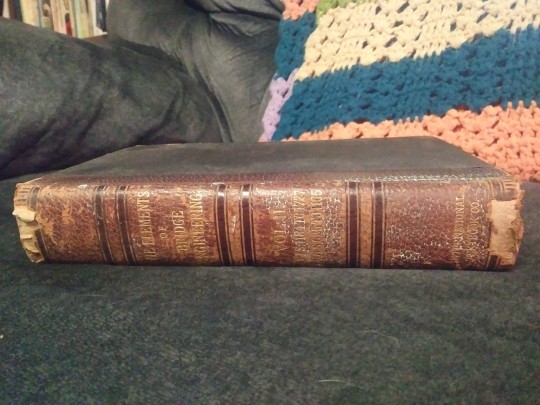

May I present The Elements of Bridge Engineering vol. II? The frontspiece says 1897; the interior design is elegant in its simplicity, it feels good in the hand, and look at those marbled endpapers... *heart eyes* When I picked it up, I was asked, “Are you actually going to read that?” and I said, “I intend to at least skim it, but even if I don’t ever get around to it, it will look impressive on the shelf.”
13. What book do you need to read by the end of the year?
I have yet to start Day of Darkness by Suzannah Rowntree. I have it all queued up on my Kindle and it's on my 10 books for 2021 list, so I have no excuse, and yet here we are...
10 notes
·
View notes